Discover Etna’s rich history and gastronomic delights
Europe’s most active volcano has inspired Sicily’s food, art and wine
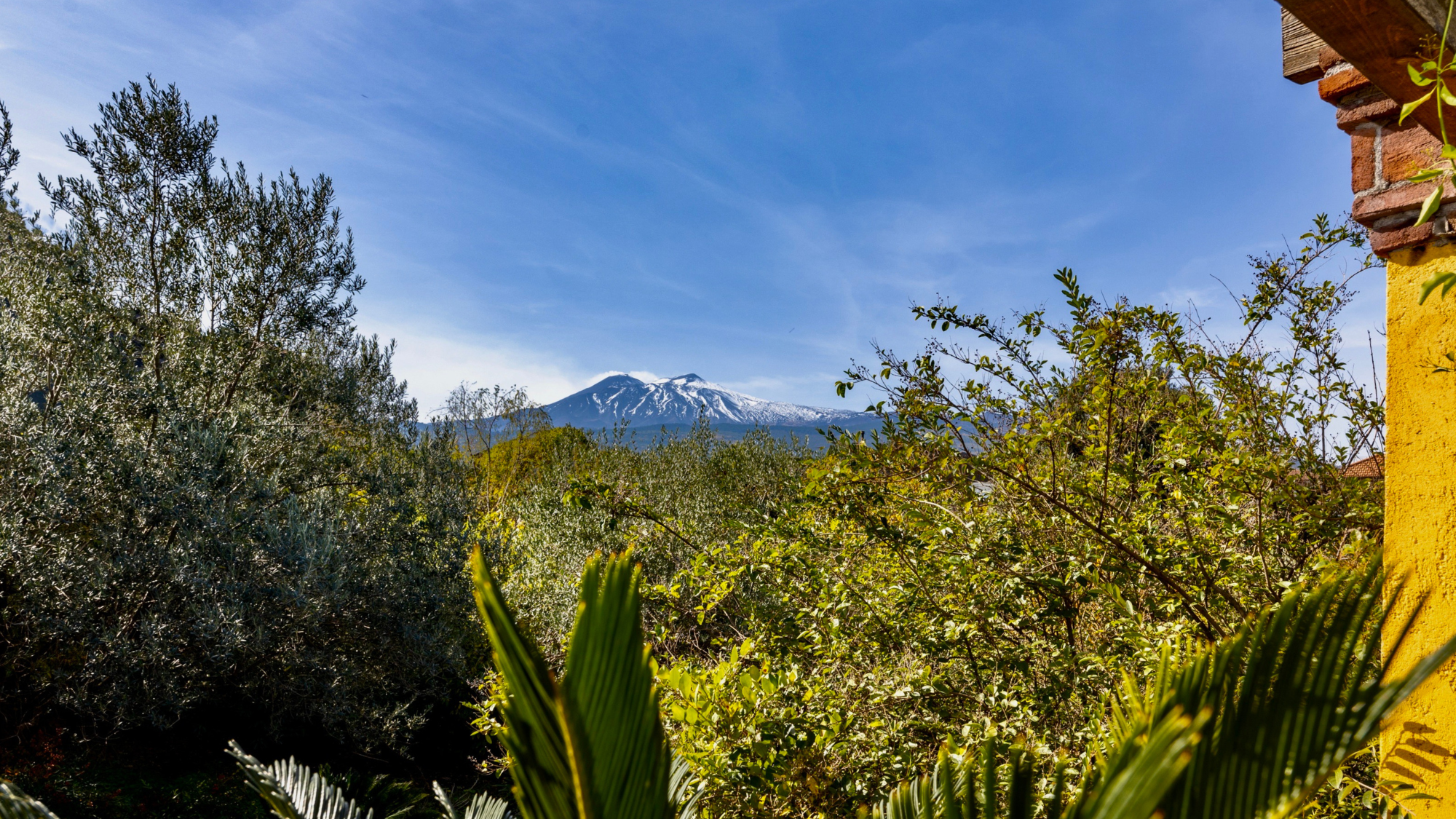
Etna is the most active volcano in Europe, and it forms the backdrop to every town in northeast Sicily, where its presence is felt in everything from the landscape to the food and wine, architecture and art. Like the region itself, Etna is constantly evolving. The provincial town of Linguaglossa, founded on a lava stream on the northern slopes of Etna, an hour north of Catania, is the perfect base for discovering the area.
Where to stay
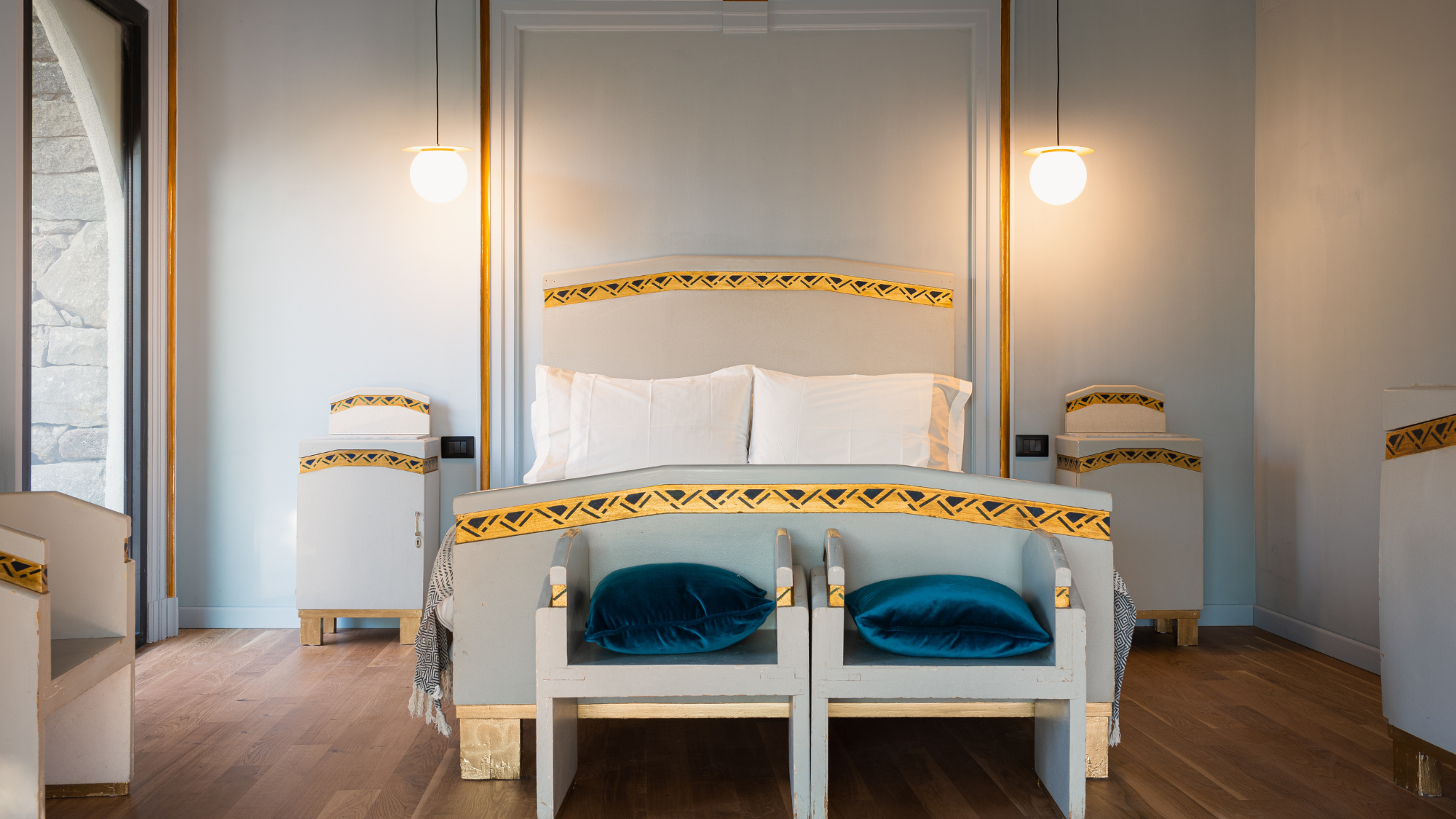
The suites have beautiful art deco beds and oak parquet floors
Palazzo Previtera in Linguaglossa embodies the ethos of the area: a restoration project, rich in history. The house, set on a quiet backstreet, has been in the same family for over 350 years. Step inside the large green door and you enter a quiet oasis.
The one-of-a-kind palazzo is run by Alfio Puglisi, a descendant of the Previtera family, and Costanza, who were both so passionate about the house and its fascinating history. Built in 1649, the building has been beautifully restored over the past decade, from the formal grand salons to the charming 17th-century chapel with a vaulted ceiling. Alfio is on hand to show guests the museum rooms: there is an extraordinary collection of old documents in the library, with books dating back to 1497, antique porcelain and Venetian glass bought by the family over centuries, plus restored silk fabrics and contemporary art.
The Week
Escape your echo chamber. Get the facts behind the news, plus analysis from multiple perspectives.

Sign up for The Week's Free Newsletters
From our morning news briefing to a weekly Good News Newsletter, get the best of The Week delivered directly to your inbox.
From our morning news briefing to a weekly Good News Newsletter, get the best of The Week delivered directly to your inbox.
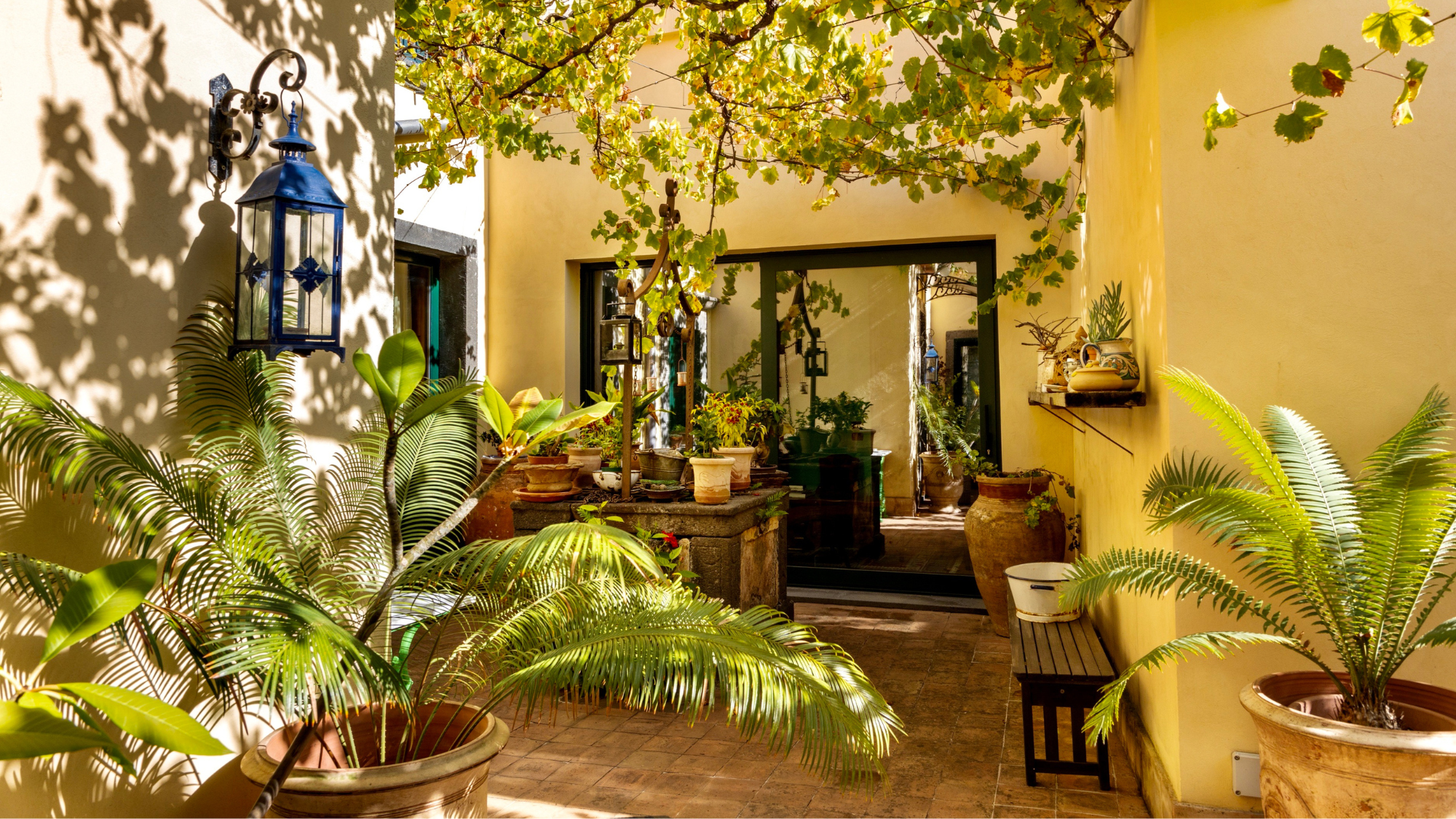
One of the charming courtyards at Palazzo Previtera
Our suite is part of a beautifully converted old dovecote, with large bifold doors onto a private terrace where we were served our delicious breakfast every morning, with fruit and vegetables from the garden or family farm.
There are three bedrooms in the main house, plus the suite and three cottages scattered in the garden, all built on a lava flow 550 metres above sea level. The garden, like the rest of the palazzo, has been lovingly restored, with a collection of over 500 plants including edible roses, hibiscus and jasmine, ancient camellias and fruit trees.
The guest rooms cleverly combine antique furniture with modern comforts. Our suite had an art deco bed, oak parquet floors, and an enormous marbled bathroom with a roll-top bath and rainfall shower, plus a roof terrace with panoramic views. Next to our room, is the new salt-water infinity pool, set on an elevated terrace with Etna emerging from the clouds in the distance and lovely views over the trees and church spires.
What to do
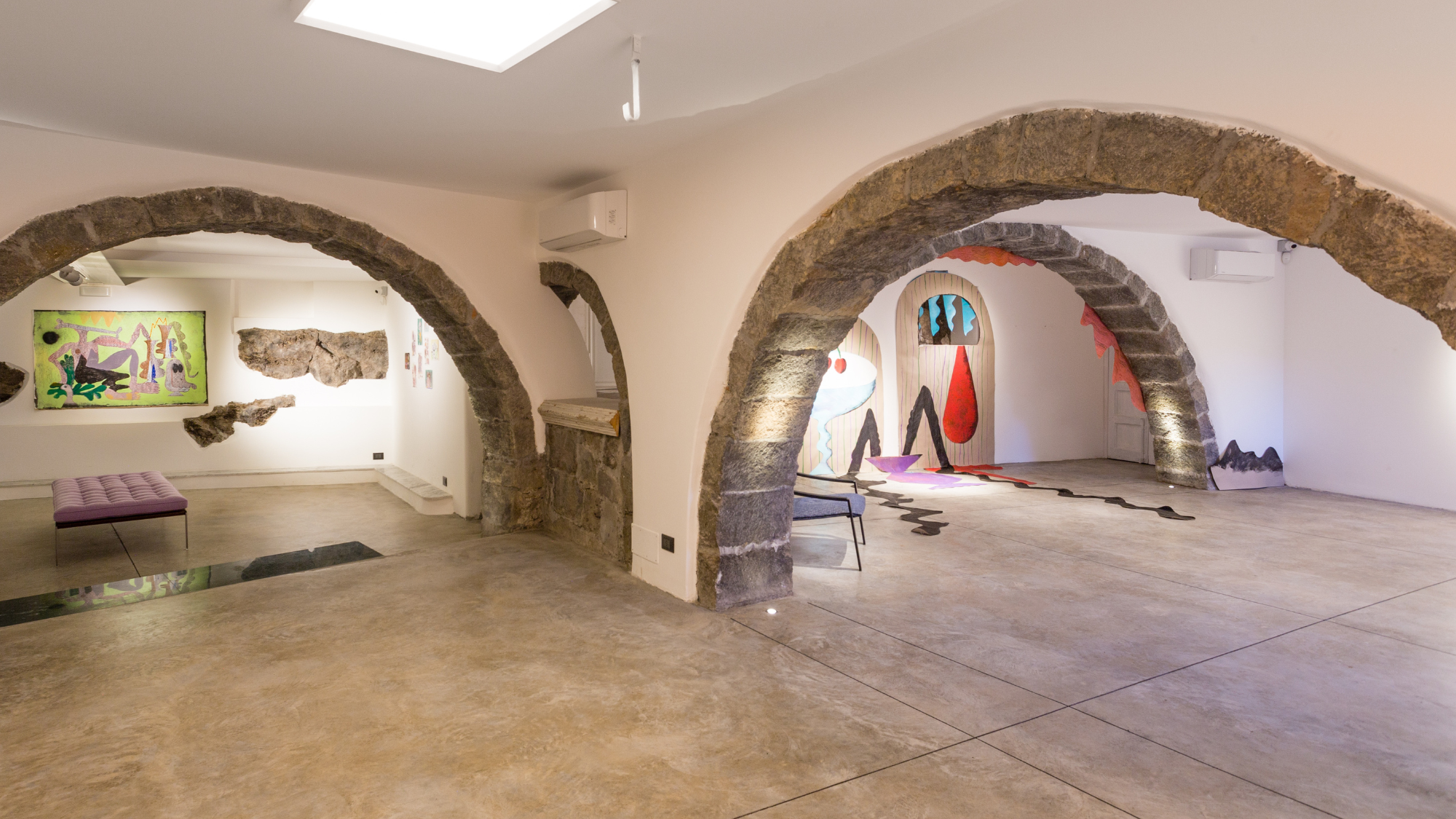
The cellars have been transformed into a cool, modern exhibition space
There is so much to explore in the house itself, from the formal rooms to the cellars, which were once used for drying hazelnuts (still a staple of the region), and which have been transformed into a cool, modern exhibition space. Norwegian artist Henrik Placht was in residence when we stayed, and had clearly fallen in love with the area, which inspired his work – a huge triptych in mixed media featuring the unmistakable curves of Etna’s craters, and beautiful watercolours painted in a local vineyard with handmade pigments sourced from a trip to North Korea years before.
A free daily email with the biggest news stories of the day – and the best features from TheWeek.com
We had a cooking lesson in the 1930s kitchen of the palazzo, where we learned to cook two local dishes. Involtini di melanzane – slices of fried aubergine filled with spaghetti, tomato sauce and cheese, rolled and baked in the oven – were melt-in-the-mouth delicious, and equally good were the lemon and parmesan infused meatballs, grilled in lemon leaves, which we picked from the garden. Guests can also enjoy foraging trips to a nearby hazelnut farm, and lessons in Etna cheese-making.
After lunch, we drove 25 minutes to Piano Provenzana – the gateway to the northern side of Etna, up a twisty road, lined with tall trees. From Piano Provenzana, a range of Etna tours are on offer. We took a sunset tour, and, having rented a warm coat (essential, even in August), boarded a 4x4 off-road bus with a local volcanologist who explained how the landscape of Etna had changed in his lifetime. We stopped twice to explore ghostly craters from the 2002 eruption, on the way up to the observatory at 3,000m, where on a clear day you can see the Aeolian Islands and the Calabrian coast.
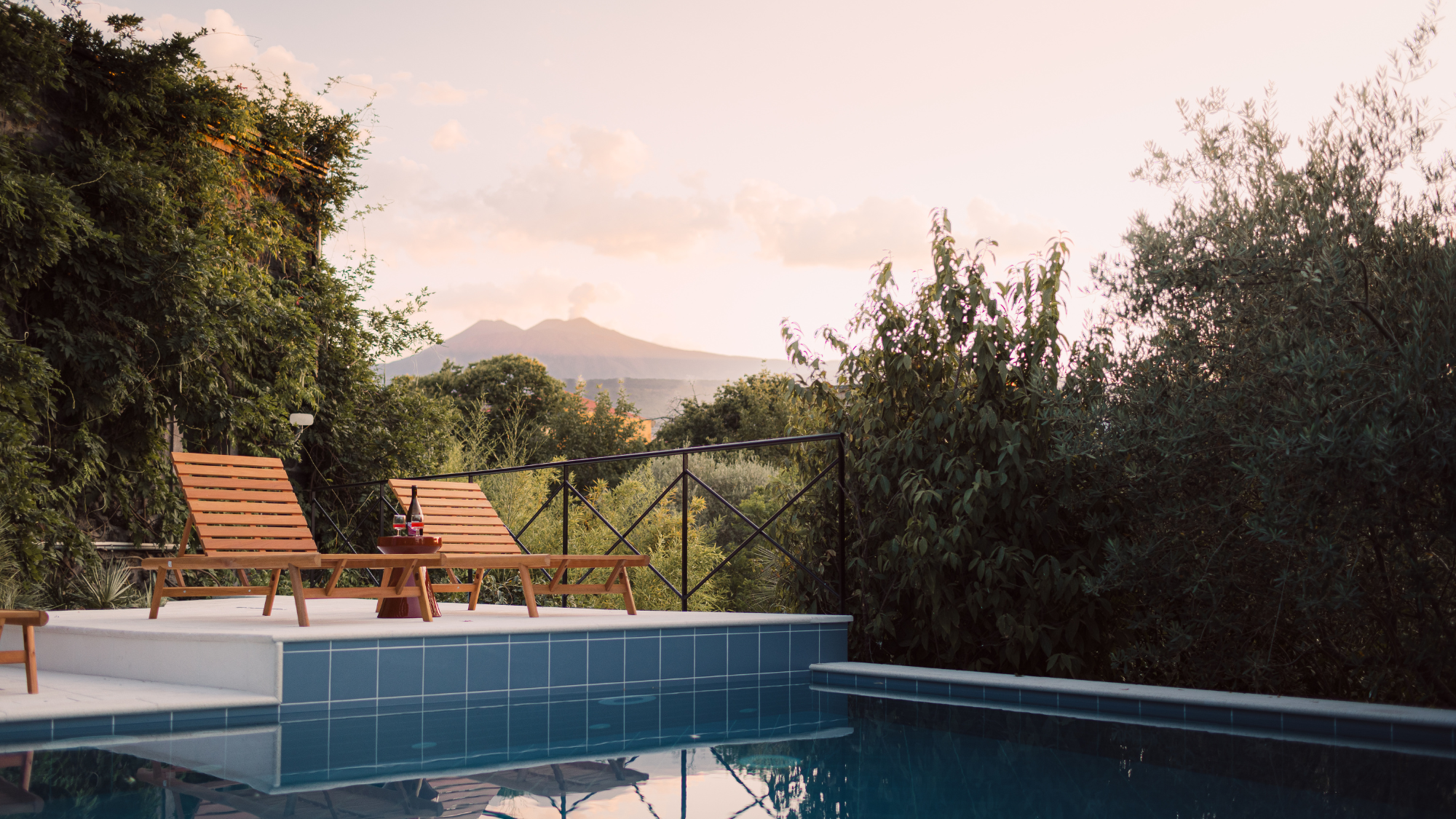
The tranquil pool boasts views of Mount Etna
There are numerous wineries around Etna and we enjoyed a tasting at Pietradolce, which covers 30 hectares on the northern slopes. The vines, exclusively native varieties Carricante and Nerello Mascalese, are between 90 and 150 years old, and grow in separate fields on the mineral rich soil, each with their own microclimate, giving each wine a distinct characteristic. The grapes are harvested and selected by hand before the vinification process in the state-of-the-art cellar.
The Farro family, who own Pietradolce, are passionate about the connection between wine and art, and the winery, built in 2015, is an architectural masterpiece in itself. Heading down the wide industrial stairs is like entering a Bond villain’s lair – the scale is monumental, with intimidatingly high ceilings and cool temperatures thanks to the thick lava stone walls. With amazing works of art and sculpture by local artisans inspired by the volcano, Pietradolce feels like a passion project – everything from the art and architecture to the agriculture itself is in homage to Etna.
It is worth exploring the cliff-top town of Taormina, and the stunning beaches below it too. Isola Bella is a 35minute drive from Linguaglossa. A pretty, horse-shoe shaped cove with an island in the centre which is connected at low tide, it has a small area of public beach, but most is given over to beach clubs. We were recommended Pizzichella on the northern end which gets the last of the afternoon sun. It is a restaurant cum beach club, with a jetty for swimming.
From Isola Bella you can hop on the cable car up to Taormina or drive up the hill and park on the outskirts (parking in town is for residents only). A beautiful old town, with bustling streets full of touristy tat and high-end shops, there is a stunning main square overlooking the sea with Etna smouldering in the distance.
Where to eat
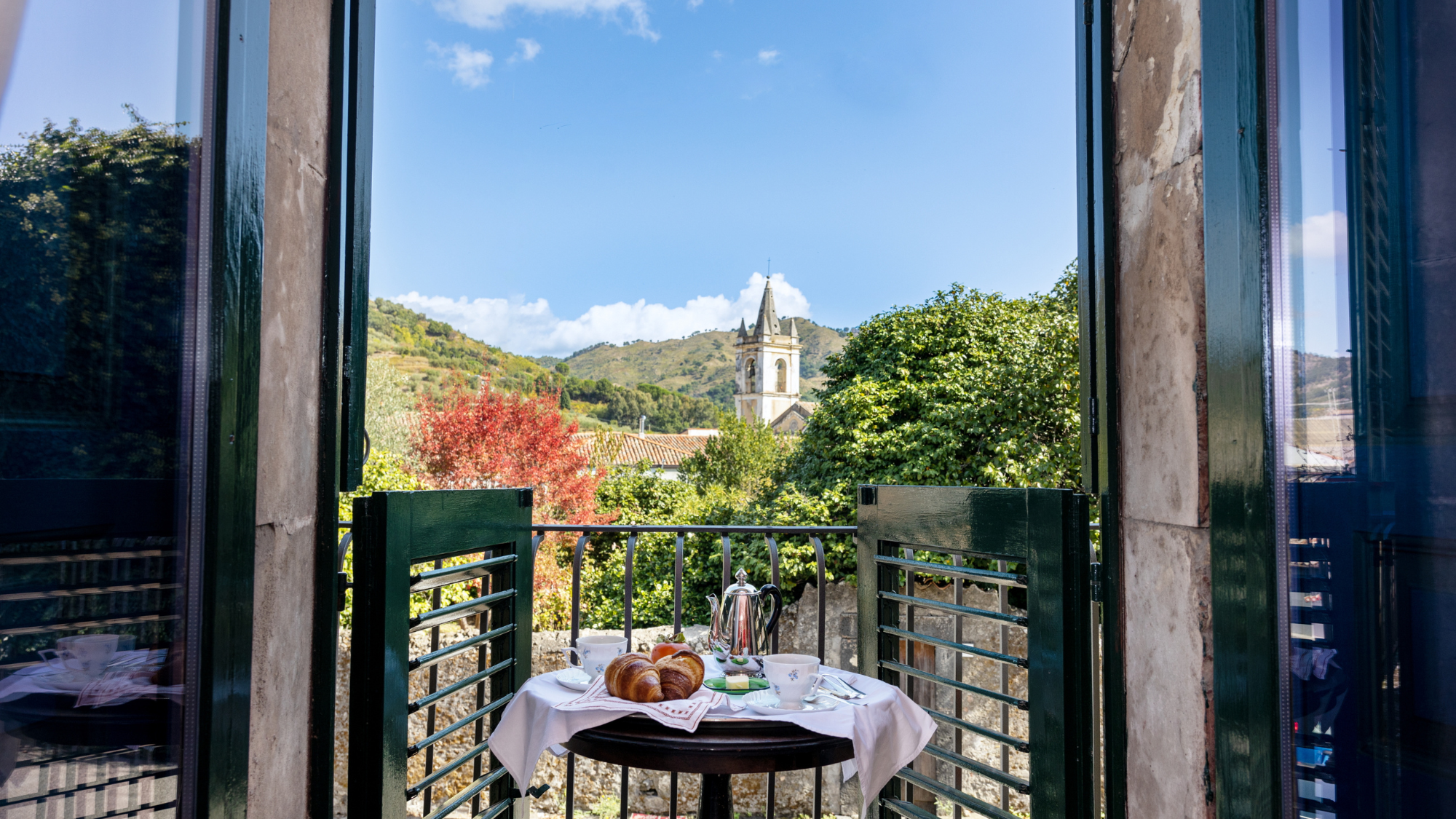
Bi-folding doors open onto a pretty terrace
Boccaperta is touted as the best restaurant in Linguaglossa. With white table cloths and contemporary art on the walls, it serves a modern twist on traditional Sicilian food – think arancini with truffle and radish, a generous selection of salami and ham from the local Nebrodi mountains, and roast lamb served on the bone, charred on the outside but tender and pink in the middle.
Full of awe after our sunset trip to Etna, we stopped at Tradizione Siciliana da Leo, popular with local families, for the most delicious thin, crisp pizza, cooked in an enormous pizza oven, and meat and vegetables grilled on an open fire on the terrace.
Taormina has many restaurants, the smartest of which is Osteria Santa Domenica. We opted for something a bit more relaxed, La Botte next door, which has a beautiful terrace, strung with fairy lights. A family institution, La Botte serves typical Sicilian fare, well done; we had fabulous grilled mussels, parmigiana – baked aubergine with parmesan and tomato sauce and crispy fried calamari. If you’ve got room for something sweet afterwards, Bam Bar just up the street serves incredible frozen granita, which is so Instagrammable you’ll have to join the queue.
Xandie was a guest of Palazzo Previtera and Pietradolce. The new suite at Palazzo Previtera sleeps two and costs from €350 per night including breakfast. A stay in a guest suite in the main house costs €150-250 per night, sleeping two, with breakfast. Palazzo Previtera is one hour from Catania airport.
-
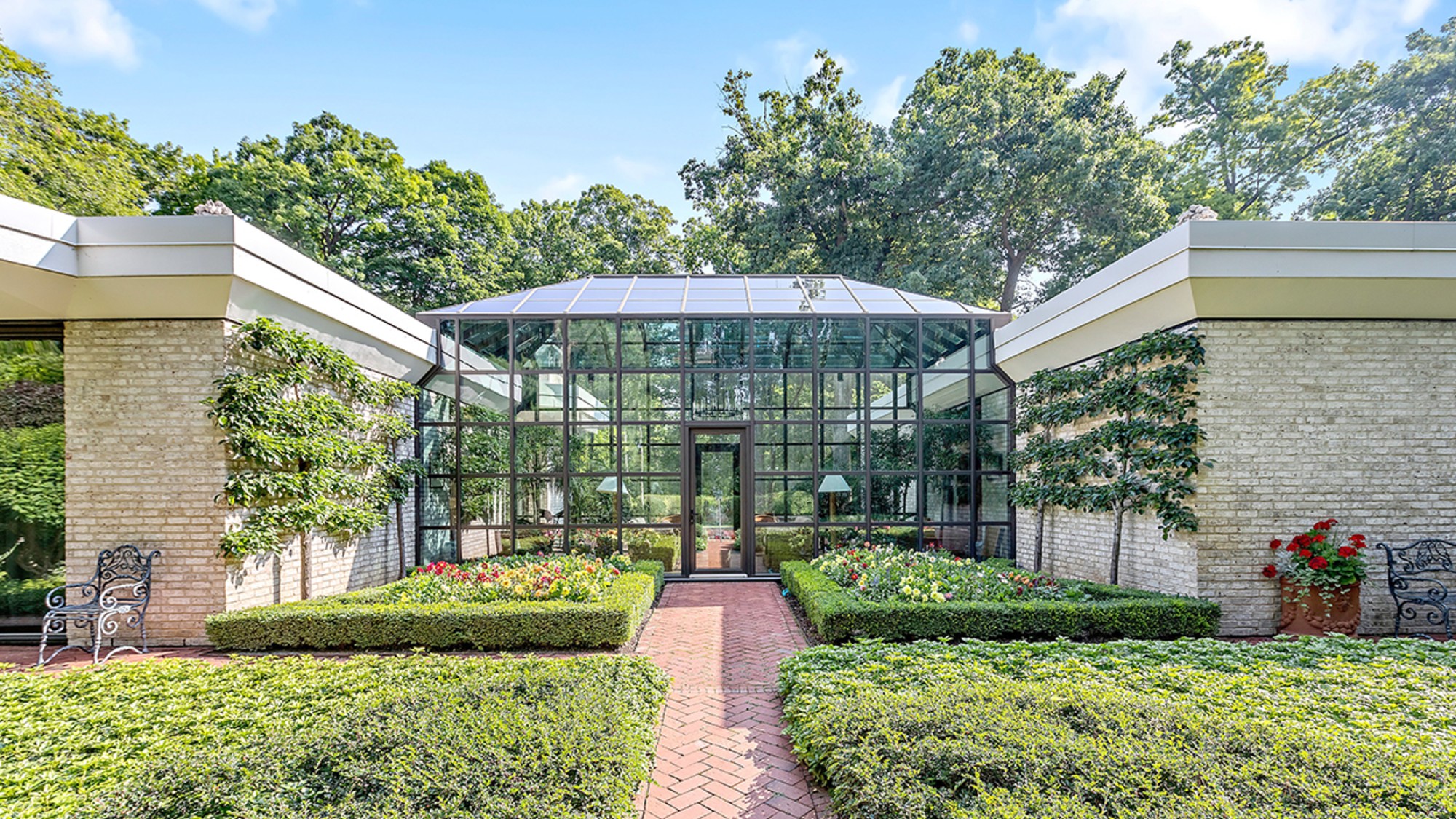 The best homes of the year
The best homes of the yearFeature Featuring a former helicopter engine repair workshop in Washington, D.C. and high-rise living in San Francisco
-
 Critics’ choice: The year’s top 10 movies
Critics’ choice: The year’s top 10 moviesFeature ‘One Battle After Another’ and ‘It Was Just an Accident’ stand out
-
 The small Caribbean island courting crypto billions
The small Caribbean island courting crypto billionsUnder the Radar Crypto mogul Olivier Janssens plans to create a libertarian utopia on Nevis
-
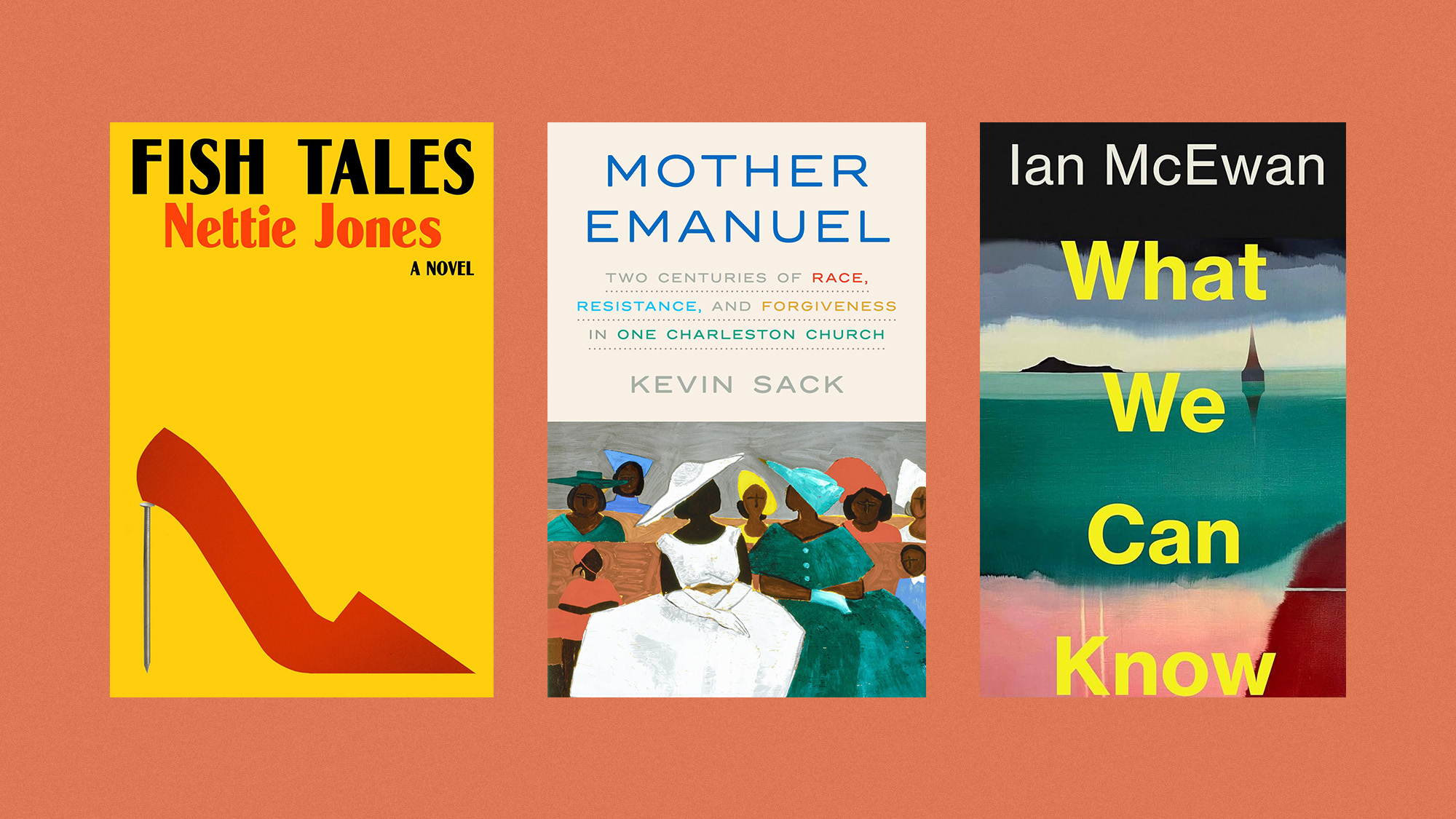 The best books of 2025
The best books of 2025The Week Recommends A deep dive into the site of a mass shooting, a new release from the author of ‘Atonement’ and more
-
 The best music of 2025
The best music of 2025The Week Recommends These were some of the finest releases of the past year
-
 The 8 best comedy series of 2025
The 8 best comedy series of 2025the week recommends From quarterlife crises to Hollywood satires, these were the funniest shows of 2025
-
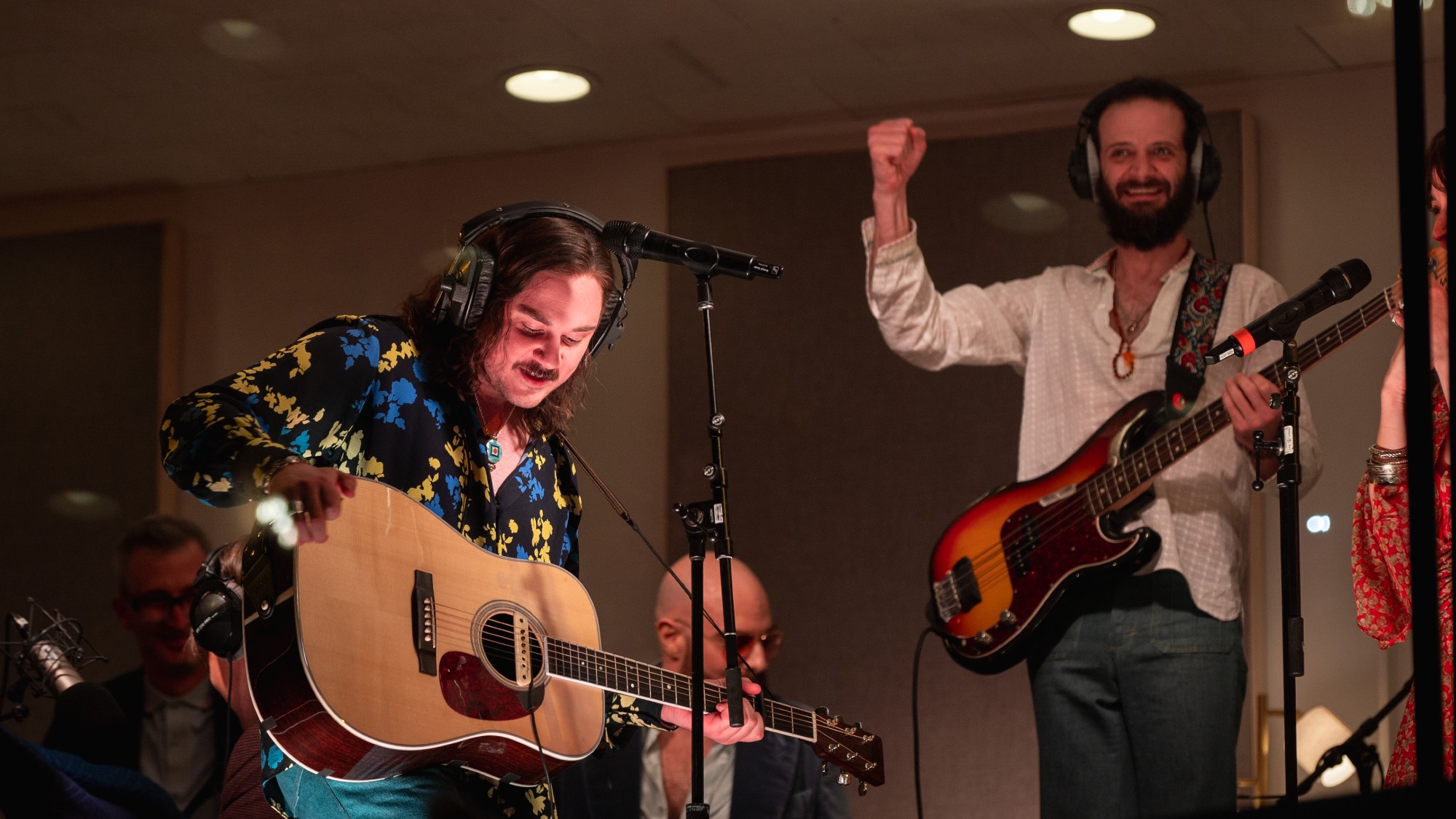 8 touring theater productions to see this winter, all across the United States
8 touring theater productions to see this winter, all across the United Statesthe week recommends New shows and reconsidered productions are on the move
-
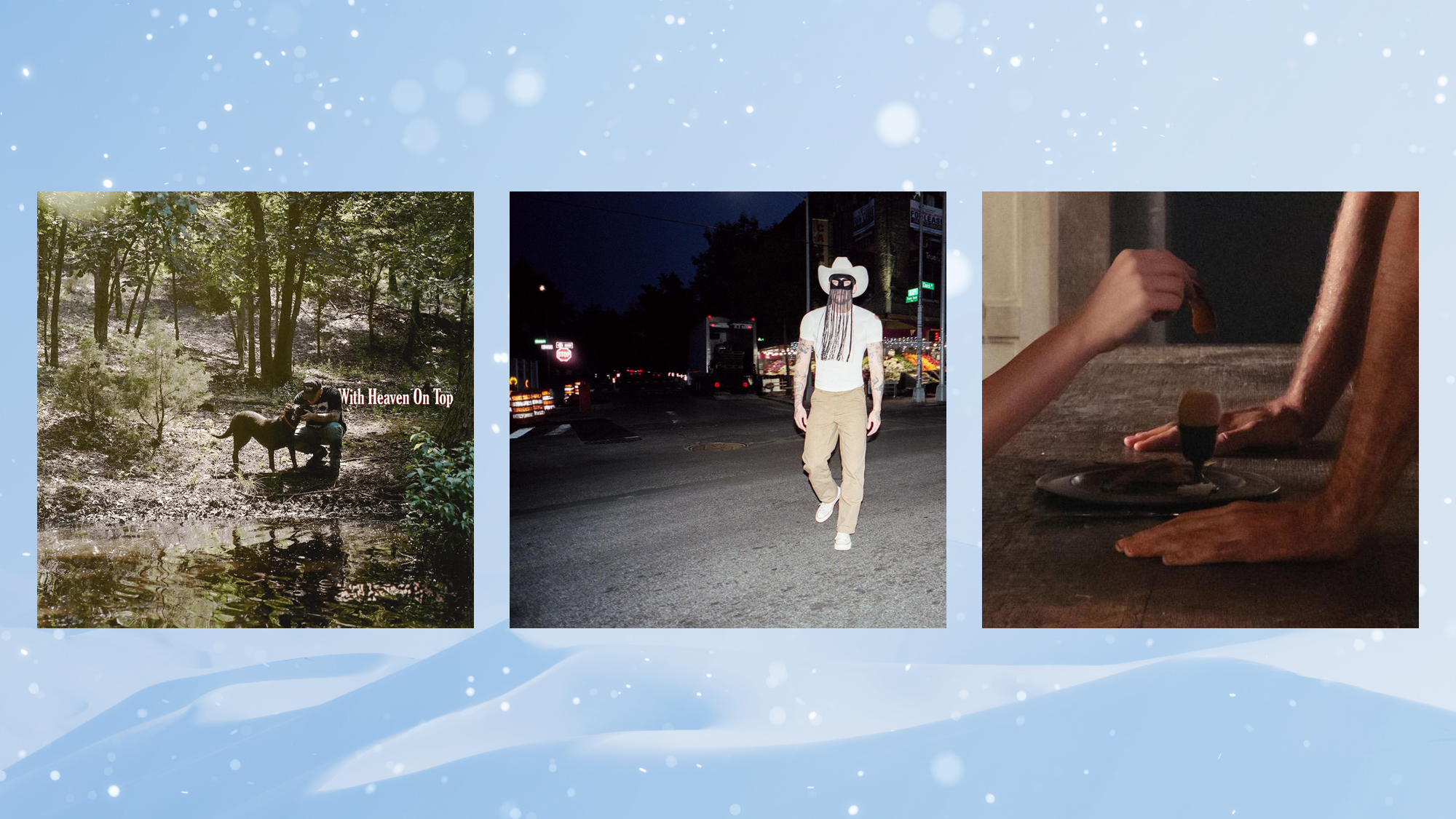 10 upcoming albums to stream during the winter chill
10 upcoming albums to stream during the winter chillThe Week Recommends As the calendar turns to 2026, check out some new music from your favorite artists
-
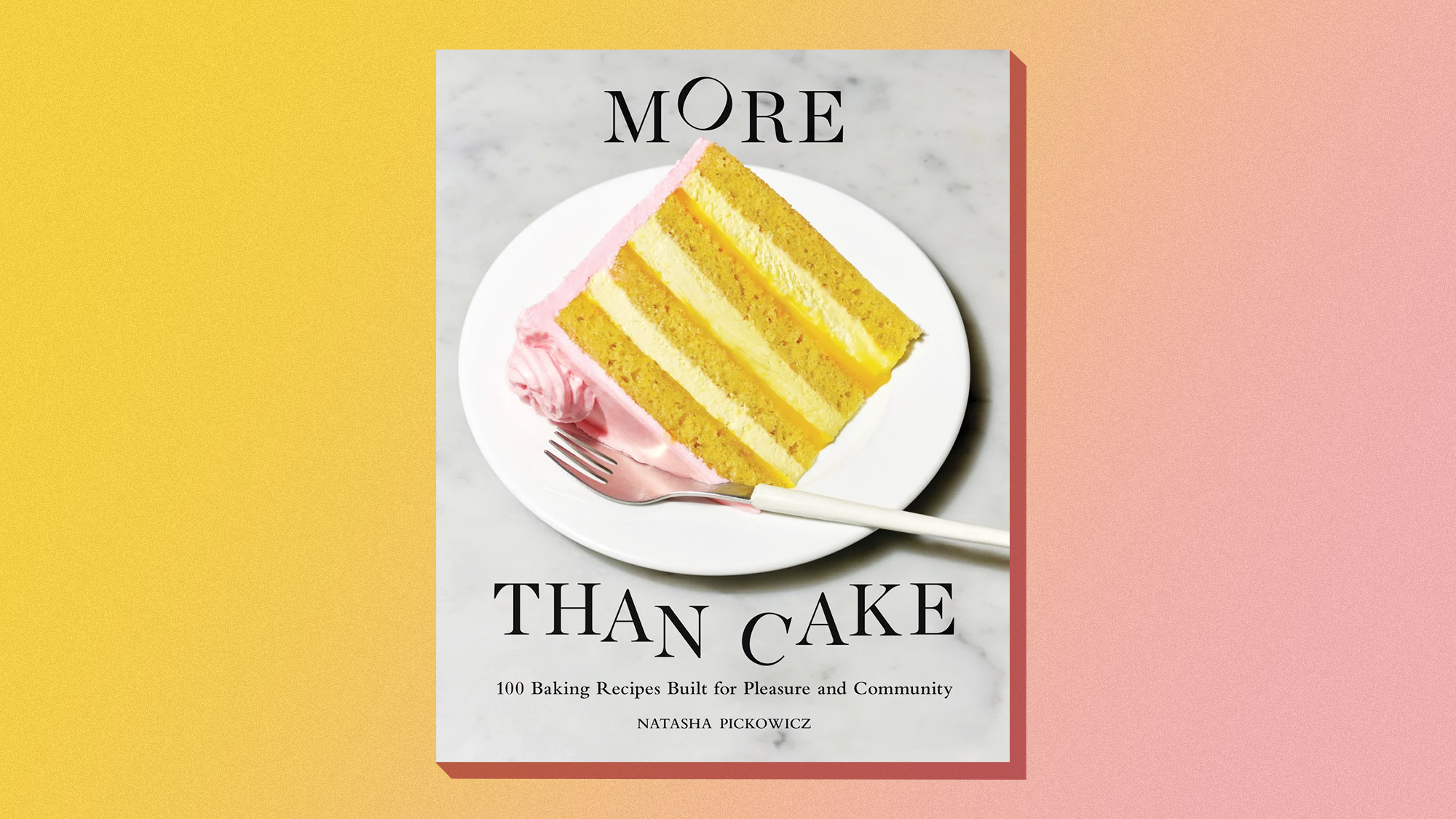 One great cookbook: Natasha Pickowicz’s ‘More Than Cake’
One great cookbook: Natasha Pickowicz’s ‘More Than Cake’the week recommends The power of pastry brought to inspired life
-
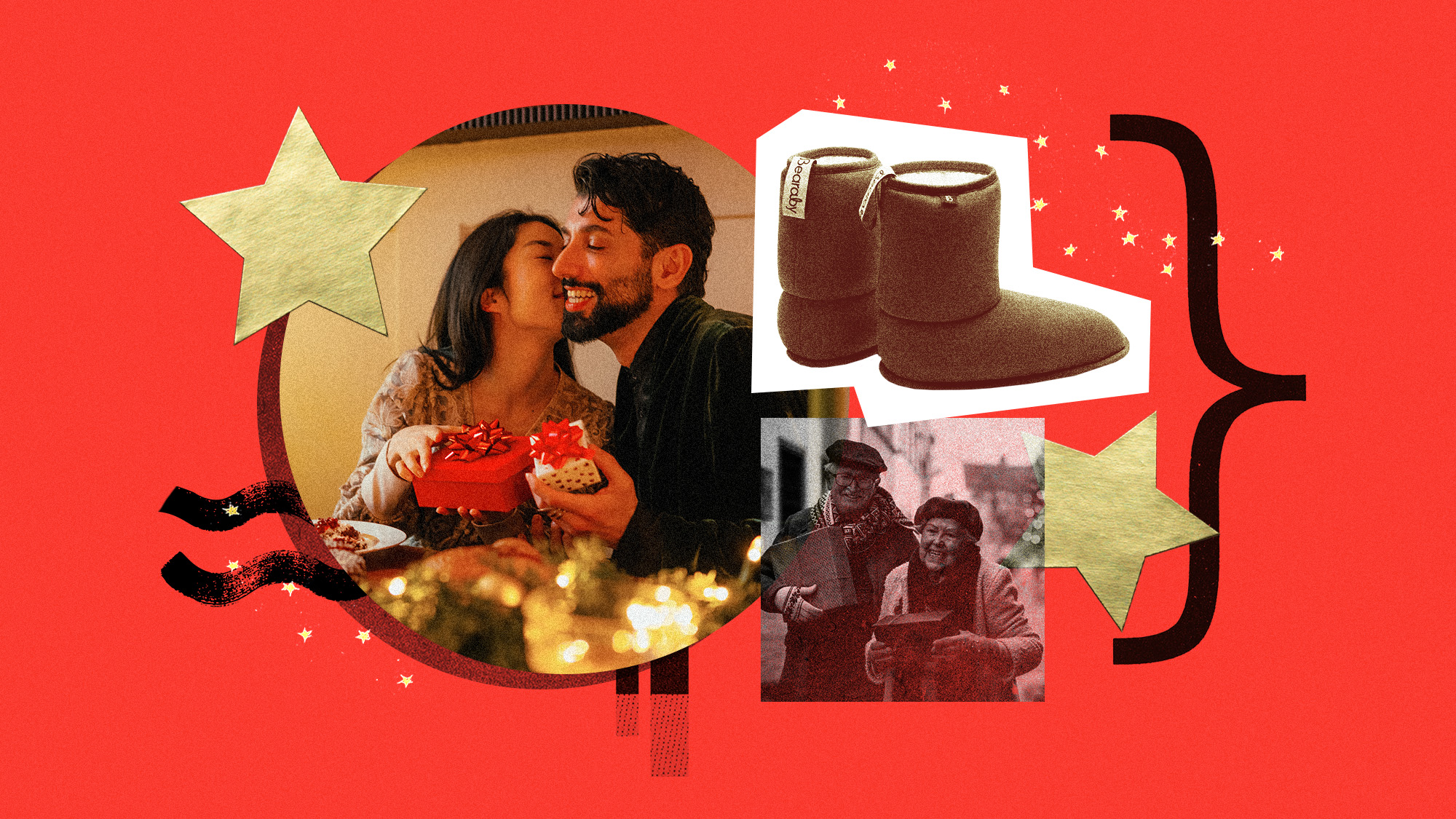 11 extra-special holiday gifts for everyone on your list
11 extra-special holiday gifts for everyone on your listThe Week Recommends Jingle their bells with the right present
-
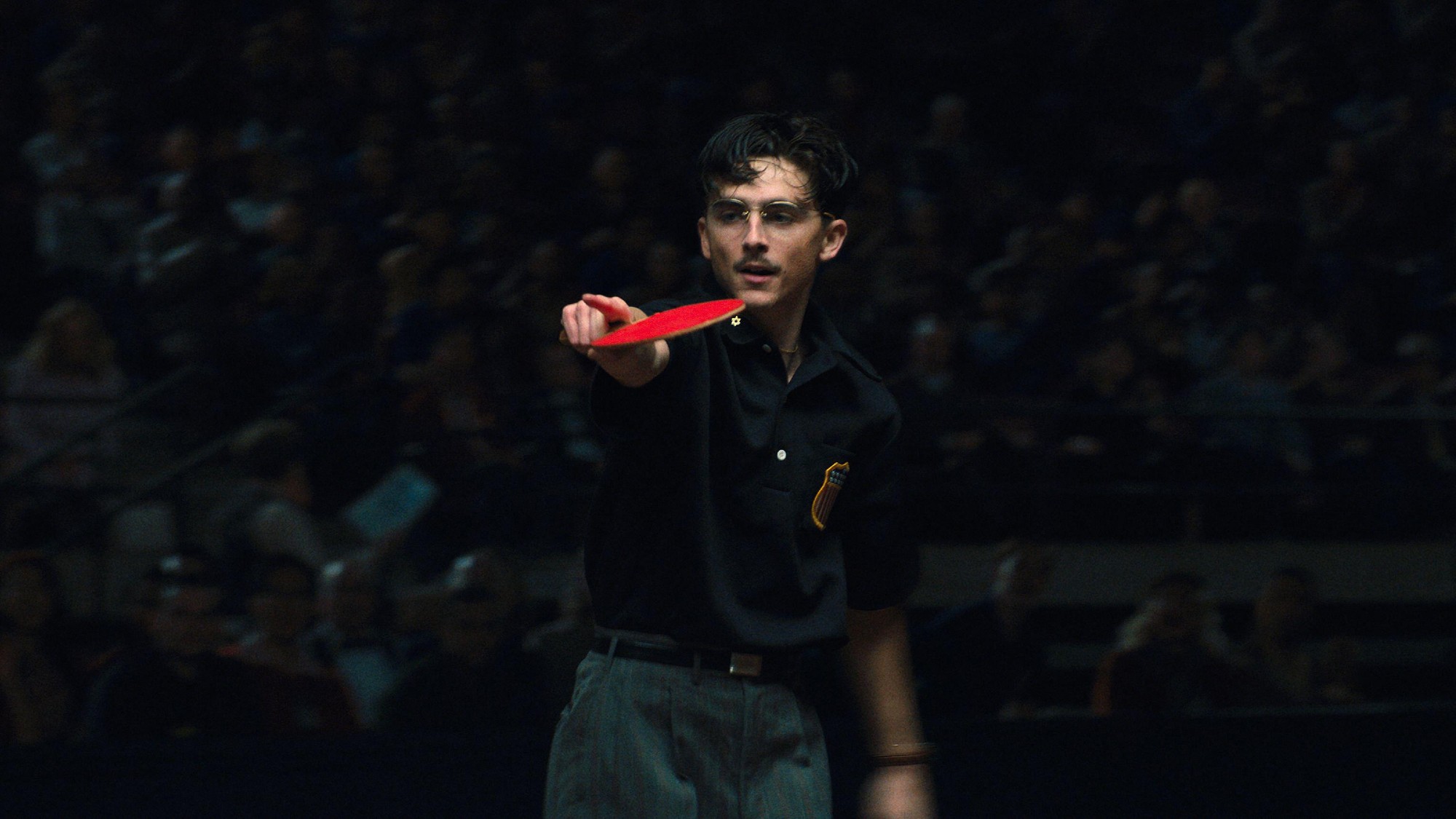 The real tragedy that inspired ‘Hamlet,’ the life of a pingpong prodigy and the third ‘Avatar’ adventure in December movies
The real tragedy that inspired ‘Hamlet,’ the life of a pingpong prodigy and the third ‘Avatar’ adventure in December moviesThe Week Recommends This month’s new releases include ‘Hamnet,’ ‘Marty Supreme’ and ‘Avatar: Fire and Ash’